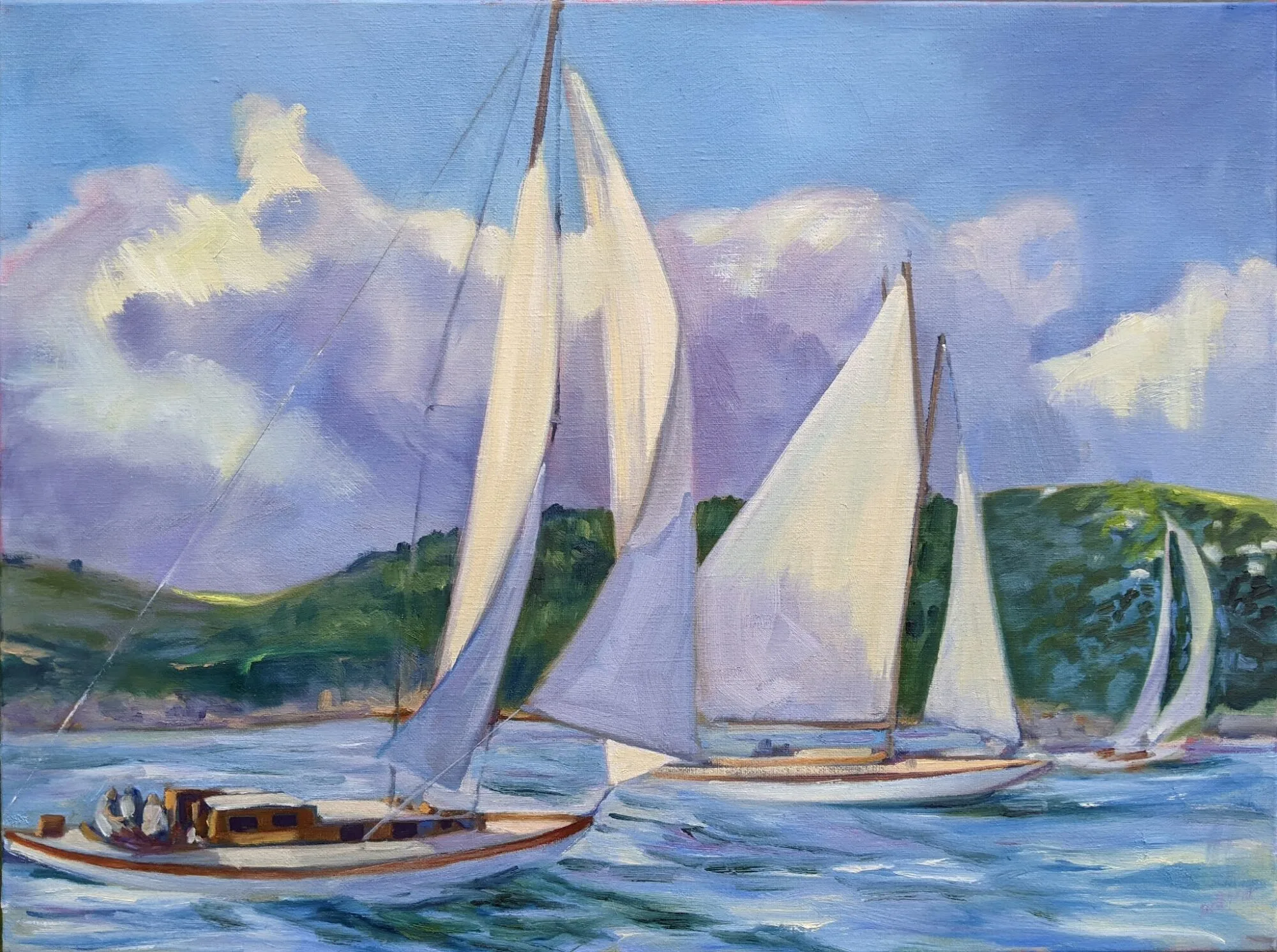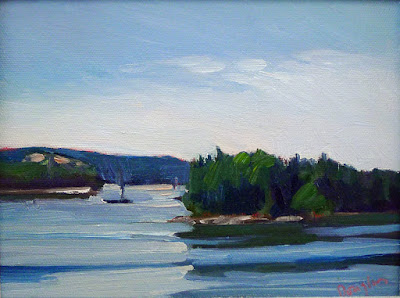Occasionally, someone wonders whether an emerging painter will end up being a superstar. Can we ever tell?
 |
|
Iowa Cornfield, 1941, Grant Wood, courtesy Wikipedia.
|
This week I contemplated a piece of contemporary art with a gallerist. “I don’t see thinking,” she said. “I only see beautiful contours. It’s content-free. There is no struggle.”
I can’t imagine anything more stultifying than striving to be in the Pantheon of Great Artists. However, the question of what makes great art is an important one. Great art must satisfy long after the flash of novelty dissipates. How does it do that?
 |
|
The Ghent Altarpiece, early 15th century, Hubert and Jan van Eyck, courtesy Wikipedia.
|
Technique
It ought to go without saying that mastery of one’s craft is the primary job of the artist. Sadly, that’s not always true in contemporary western art, where ephemeral ideas sometimes mean more than specialized competence. However, if one looks back at art which has staying power, it’s always technically superb. How do you get to Carnegie Hall, sister? Practice, practice, practice.
Courage
Art is a process of exploration, a constant revolution. An artist must travel beyond his abilities every time he picks up a brush, or he begins to parody himself. The end of our training is, conversely, the beginning of our real education.
People sometimes tell me that they want to be ‘more consistent’ in their painting. I think that’s a trap, antithetical to the idea of development. A consistent body of work just comes with time.
 |
|
Saturn Devouring His Son, 1820–23, Francisco Goya, courtesy Wikipedia. |
Emotional content
One reason I hate writing artist’s statements is that I believe my real content is inexplicable. You, the outsider, might understand it, but the word-spewing part of my brain never will. Still, I hope my simple trees, boats and rocks convey something greater than their nominal subject.
There’s lots of art that’s didactic, and I’ve produced much of it myself. But didacticism is not necessary. Nor is it the hallmark of real artistic maturity, which somehow moves beyond issues.
 |
|
The Railway, 1873, Édouard Manet, courtesy Wikipedia.
|
Within the vision of our times
Johann Sebastian Bach is recognized as one of the greatest composers of history. His period and his style were
the Baroque. He was one of its last practitioners. He grew up within its aesthetic and it reached a climax in his writing. He was both within the vision of his time and the full flowering of that vision.
Knowing whether we’re painting within our period is difficult. In my first class with
Cornelia Foss, she had me paint an orange on a tray. “If it was 1950, I’d say ‘Brava’,” she said. “But it’s not.” It was the best criticism I’ve ever received—she was telling me my technique was fine, but my style was dated.
We’re not Hudson River painters, we’re not Dutch Golden Age painters. This is the 21st century, and we need to paint what speaks to our peers. That’s often uncomfortable, and frequently a mystery.
You can’t count on your audience for advice with this. They’re as mystified as we are.
Bach was forgotten soon after his death. His works were rediscovered by
Felix Mendelssohn. In 1823 Mendelssohn’s grandmother gave him a copy of the score for Bach’s
St. Matthew Passion. Five years later, Mendelssohn mounted a performance of this long-forgotten masterpiece. His selfless promotion of a dead artist gave Bach his rightful place in music history.


































